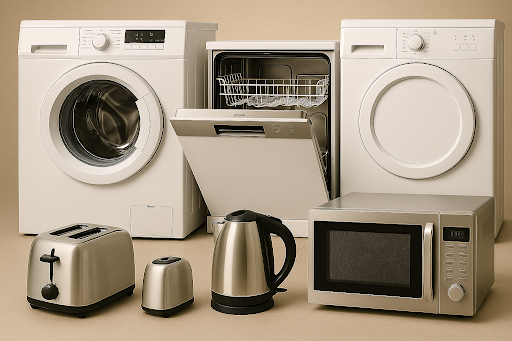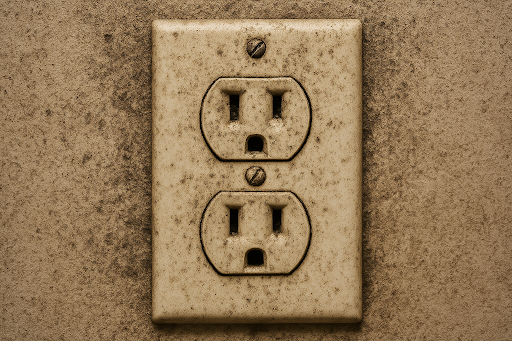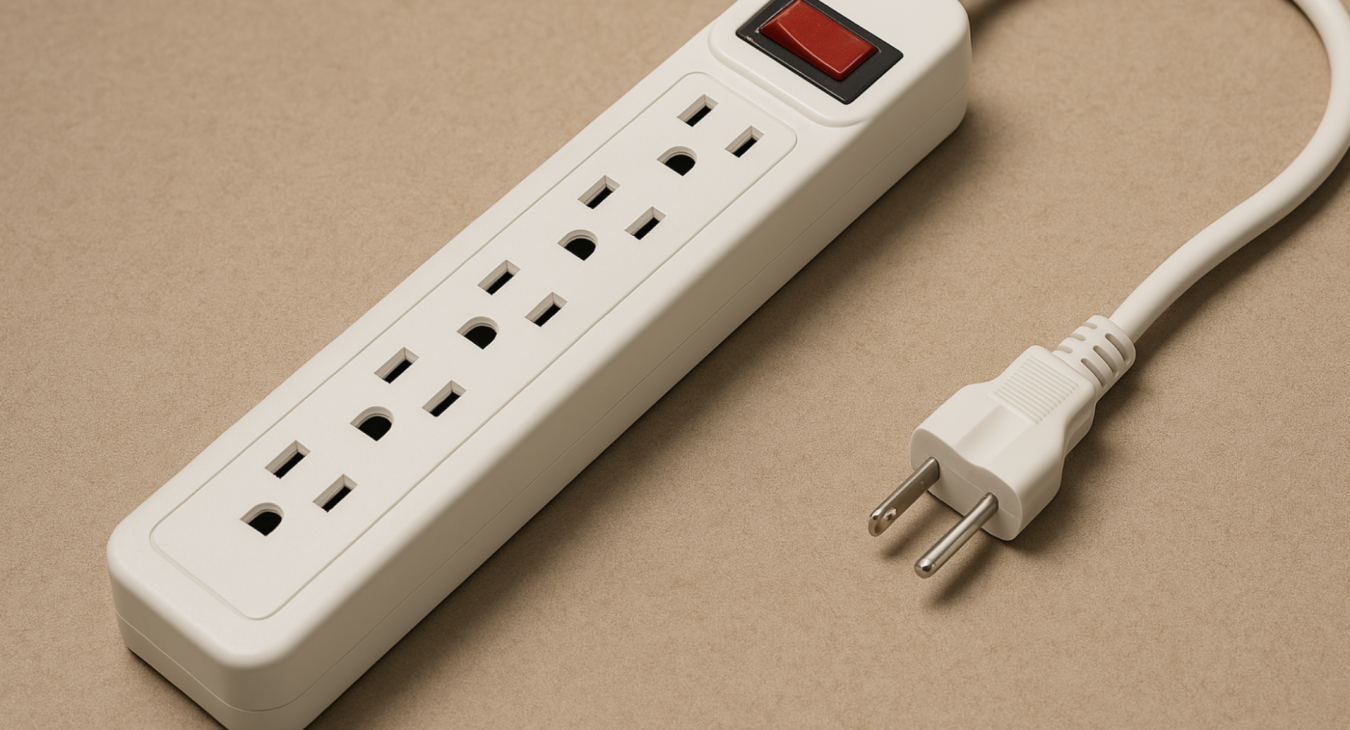Extension cord or Power Strip: Are They Safe to Use?
Extension leads, also known as power strips or electrical extension cords, are pretty much the unsung heroes of modern life.
Índice
- Understanding Extension Lead Fundamentals
- Power Requirements and Load Management
- Indoor vs Outdoor Applications
- Proper Connection and Installation Practices
- Environmental Factors and Safety Considerations
- Identifying Signs of Damage and Wear
- Best Practices for Long-Term Use
- Specific Application Guidelines
- Professional Recommendations and Standards
- Conclusion
Whether you’re plugging in your laptop, your phone, or your third coffee machine (no judgment), they give you extra outlets where and when you need them. But—and this is a big one—misuse of these handy devices can lead to some serious consequences, including electrical fire risks and electrical shock dangers.
As a qualified electrician and electrical industry instructor, I’ve seen what can go wrong when extension cords are used improperly. We’re talking everything from minor singes to major house fires. So, in this guide, we’ll break down everything you need to know to use extension cords safely—whether you’re at home, at work, or somewhere in between.
Back to top1) Understanding Extension Lead Fundamentals
Before you even uncoil that cord, it’s essential to understand how it’s built and what it can handle. Each electrical extension cord comes with a specific rating—this includes maximum amperage, voltage capacity, and the type of appliances it can safely power. These aren’t polite suggestions. They’re hard limits, kind of like the “you must be this tall to ride” sign—but with way more potential for sparks and melted plastic.
Check the cord rating printed on the tag or insulation. You’ll also want to look for approval stamps from recognized testing bodies like Underwriters Laboratories (UL). Think of it as the Good Housekeeping seal for your wiring—it means the cord meets proper safety standards.
Don’t forget about wire gauge—the unsung MVP of extension cord specs. Thicker wires (which have lower gauge numbers) can safely carry more current across longer distances. If your cord is long but has a wimpy wire gauge, you’ll get voltage drop, which is both inefficient and a potential safety hazard—especially with power-hungry tools.
Back to top2) Power Requirements and Load Management
Every electrical device pulls a certain amount of juice. To keep things safe, you need to understand what your gear demands in terms of power. This is usually listed in watts or amps. Things like kettles, heaters, and power tools tend to be especially greedy.

To avoid overload (and the smell of burning plastic), add up the total wattage of everything plugged into the power strips. Make sure it doesn’t exceed the cord’s rated maximum. Overload = fire risk and possibly the death of your favorite blender.
Even heavy duty extension cords have limits. If you’re running multiple high-powered tools or appliances, spread them across different circuits. It’s like managing toddlers: give each one their own space to avoid a meltdown.
Also, consider the duty cycle. Tools used continuously (like during a long DIY project) produce way more heat than ones used occasionally. That heat builds up in the cord and can eventually lead to overheating if you’re not careful. Electrical Safety First have devised a very clever interactive calculator to see what can safely be used on UK extension cords.
Back to top3) Indoor vs Outdoor Applications
Here’s the thing: not all extension cords are created equal. Indoor cords are designed for calm, cushy environments—think carpets and climate control. Outdoor extension cords, on the other hand, are built tough. They come with weather-resistant insulation that can handle rain, sun, and the occasional squirrel attack.
Always match the cord to the job. Using an indoor cord outdoors is like wearing flip-flops in a snowstorm—it’s not going to end well. Weather extremes affect cord flexibility and durability. Cold makes them stiff and brittle; heat can make insulation too soft. Either way, it’s bad news for electrical shock protection and fire prevention.
If you’re working on a construction site, you’re dealing with moisture, dust, rough surfaces—and sometimes all at once. In these settings, you’ll need heavy duty cords with extra safety features. Often, regulations require specific plugs or built-in circuit breakers for added protection.
For more on this topic, see our post: Outdoor Electrical Outlets, are sockets outside safe?
Back to top4) Proper Connection and Installation Practices
The connection between your extension lead and wall outlet is like a handshake—you want it firm, not wobbly. A loose plug creates heat, which can escalate into an electrical hazard faster than you’d think.
Make sure your cords have three-prong plugs, especially for appliances with metal cases. That third prong isn’t just there for decoration—it provides essential earth protection in case something shorts out. Don’t remove it, don’t use sketchy adapters, and definitely don’t file it down to make it fit. (Yes, people actually do that.)
Whatever you do, don’t daisy-chain extension leads (plugging one into another). It seems clever until you realize you’re multiplying your risk with each connection. It’s like building a Jenga tower—eventually, something’s going to fall.
Keep cords out of walkways, too. Not only are they tripping hazards, but they can also suffer physical damage from constant foot traffic. Damaged cords = exposed wires = serious danger.
For more on floor sockets and tripping hazards, check out our guide: Are Electrical Socket Outlets on the Floor Safe?
Back to top5) Environmental Factors and Safety Considerations
Your environment plays a big role in extension lead safety. Dust build-up in unused sockets? That’s a potential fire risk, especially in places without good airflow. Clean them regularly, and maybe try not to let your extension cord double as a dust bunny collector.

Ambient temperature matters too. High heat reduces how much current your cord can safely carry. Space heaters in hot rooms? That’s a fire hazard cocktail waiting to happen.
Moisture—from rain, humidity, or wet floors—is a major concern. Even indoors, places like bathrooms and basements can shorten cord life. In high-humidity spots, opt for moisture-resistant cords.
And if you’re using extension cords in workshops or garages, be mindful of chemical exposure. Solvents, oils, and cleaners can degrade insulation, turning a tough cord into a brittle, unsafe mess. Choose cords rated for these conditions if you’re regularly working around chemicals.
Want to know how to protect against shock in damp areas? Read: An RCD test button could save your life: How to Safety Test
Back to top6) Identifying Signs of Damage and Wear
Like tires or avocados, extension cords don’t last forever. Keep an eye out for signs of wear: visible wires, cracks, discoloration, or the unmistakable smell of burnt insulation.
Heat damage usually shows up as brown spots or melted insulation near the plug or along the cord. If it looks cooked, it probably is—and it’s time to toss it.
Physical damage from cuts, kinks, or crushed spots can also compromise the insulation. Even if it “still works,” it’s not safe. That tiny nick might be all it takes to turn your cord into a sparking hazard.
Inspect connection points closely. If a plug feels loose, makes sparks, or gets hot to the touch, stop using it. Seriously. That’s not “character”—that’s a warning sign.
For a deeper look at this, read: Faulty Extension Lead? Signs of when to replace
Back to top7) Best Practices for Long-Term Use
Even though extension leads are meant to be temporary solutions, we all know they often end up being permanent housemates. If you’re going to use one long-term, play it smart.
Choose cords rated well above your expected load—think of it as adding a buffer for those surprise guests (like that unexpected second printer). Wall-mount them when possible to keep them off the floor and away from chaos.
In office spaces, invest in multi-outlet adapters with circuit breakers and surge protector features. They offer extra protection and peace of mind for your tech gear.
Do a quick inspection once a month—yes, like flossing, it’s annoying but worth it. Replace cords showing any signs of deterioration. And please, don’t “fix” them with electrical tape. That’s not a repair—it’s a liability.
For more tips in professional settings, read: Hazards and Electrical Safety in the Workplace
Back to top8) Specific Application Guidelines
Power tools need heavy duty extension cords—not the flimsy white kind from the dollar store. Remember that when tools start up, they can draw way more power than when they’re running. Factor that into your cord selection.
Space heaters? They really should go straight into the wall. But if you must use an extension cord, make sure it’s rated for the heater’s full power draw. Monitor it for heat, and if the cord feels warm, unplug it. It’s not getting cozy—it’s overheating.
For general household stuff, a regular extension lead is usually fine. But avoid using them for large appliances like fridges and washers. Those are marathon runners, not sprinters—they need a dedicated, permanent outlet.
In workshops or garages, conditions can be tough. Even if you’re indoors, go with outdoor extension cords for added durability and moisture resistance. It’s an extra safety net in a demanding environment.
Back to top9) Professional Recommendations and Standards
The National Electrical Code sets out clear rules for how extension cords should be used. Even if you’re not legally bound to follow it, it’s smart to treat it as your electrical bible.
Whenever possible, go for permanent solutions over temporary fixes. If you find yourself always using an extension lead in the same spot—just get a new outlet installed. Future you (and your insurance company) will thank you.
Regular inspections from a licensed electrician can also catch wiring issues before they become dangerous. Things like overloaded circuits, poor grounding, or outdated breakers only make extension lead use more hazardous.
Back to top10) Conclusion
Electrical safety starts with understanding what your equipment can—and can’t—handle. While extension leads offer fantastic convenience, misusing them can lead to serious consequences.
So remember:
- Choose the right cord for the job
- Don’t overload it
- Avoid damage and inspect regularly
- When in doubt, call a qualified electrician
Above all, don’t treat your extension cord like a permanent solution. And if you must keep it long term, do it with care and caution. Need help figuring out the right setup for your space? Your local qualified electrician is only a call away. Trust us—it’s cheaper than a fire.
Back to top
